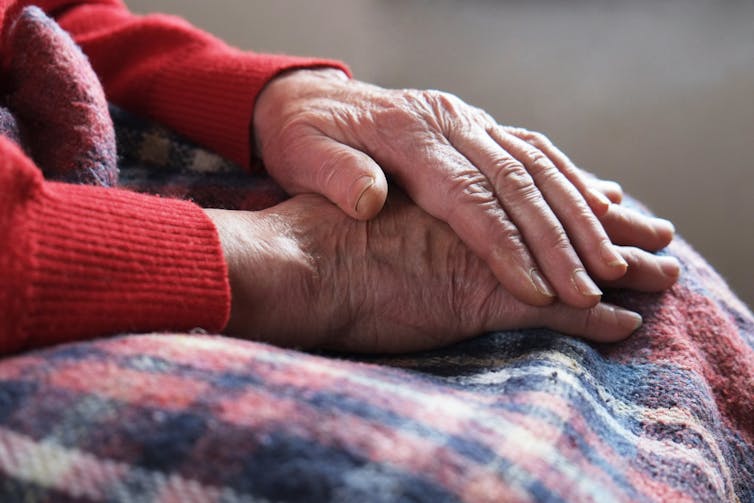We all need energy to survive. Here are 3 ways to ensure Australia's crazy power prices leave no-one behind
- Written by Rohan Best, Senior lecturer, Macquarie University

Australia is in the midst of a spiralling energy crisis. Prices have risen rapidly and are forecast to increase by another 56% in the next two years.
The federal government is considering short-term solutions such as imposing a price cap on gas. But amid stiff global headwinds including the war on Ukraine, more must be done to protect vulnerable energy consumers – now and in the long term.
We all need energy to survive: to raise our families, do our jobs and stay healthy. So how do we make sure Australia’s energy market leaves no-one behind?
A key step is a policy overhaul so all households can access rooftop solar and other technology to slash energy bills.
Why the system must change
Earlier this month, the Australian Energy Regulator (AER) released a new consumer vulnerability strategy. It called for “game-changer” reforms to ensure energy markets are inclusive and equitable.
Launching the strategy, AER chair Clare Savage said about 2.7% of residential energy consumers have debt longer than 90 days. She said a quarter of those customers had a debt greater than $2,500, and added:
When your budget might allow a spare $5 or $10 a week, coming back from $2,500 worth of energy debt would be almost impossible - it would certainly feel insurmountable.
The AER strategy contains 15 actions. They include measures to tackle market complexity, remove barriers to participation, increase protections and improve energy affordability for all.
One suggested action involves extending financial support to vulnerable energy consumers via rebates. But as I outline below, such policy can be difficult to design – as Australia’s experience with rooftop solar shows.
Government rebates are key
About 30% of detached homes in Australia have rooftop solar systems installed. This could reach 65% by 2050.
In recent years, Australian governments have offered rebates to households that install rooftop solar. Studies have found households with the technology installed are far less likely to struggle to pay their energy bills.
But as my research shows, low-wealth households are less likely than average to have rooftop solar installed. And homeowners are almost five times more likely than renters to have rooftop solar.
Policies to rectify this have not always succeeded. For example, a Victorian scheme offering a $1,400 rebate to landlords who install solar panels on a rental property has had slow uptake.
Governments must ensure the continued surge in rooftop solar is equitable. The same goes for home batteries which support rooftop solar – a technology also set to expand in coming decades.
New approaches are needed. Here are three options for policy reform.
1. Count assets, not income
Government energy rebates and other financial support are often means-tested. Eligibility tends to be based on income.
But research shows a household’s assets are much more important than income in determining which have solar panels. These assets might include shares, savings or physical goods that can be used to help cover the upfront cost of installing the technology.
Governments should target energy rebates to households where the value of the home or other financial assets, such as savings in bank accounts, is low.
2. Tailor financial assistance
Current energy rebate schemes often provide the same amount of money to all eligible households, regardless of household assets. This generic policy design is inequitable because many poorer households can’t afford even the reduced cost, so end up getting nothing.
Government energy rebates should be tailored so households receive different amounts, depending on the value of their assets.
This tailored approach is already taken by the broader welfare system, where a recipient’s assets are part of the criteria used to determine what payments they receive.
3. Combine and conquer
Let’s say a government offers two types of rebates: one for electric vehicles and one for rooftop solar.
Usually, households must financially contribute as well, perhaps through a co-payment or by taking on a loan. However, a poorer household may not be in a position to make even that subsidised contribution.
Or perhaps a household lives in a rental property, and so can’t take advantage of a rooftop solar subsidy.
But what if two subsidies could be combined to form one larger subsidy? That might enable a household to adopt at least one of the technologies.
Governments could allow incentives for other technologies to also be pooled, such as those for household appliances or home batteries.
Thinking big
The problems of energy inequity extend beyond eye-watering gas and electricity bills. Energy poverty can increase physical and mental health risks and contribute to social isolation, among other harms.
As climate change worsens, extreme weather will only exacerbate the energy equity crisis.
Financial disaster brought on by illness or other challenges can strike us at any time. Many people now struggling to pay their power bills may never have thought they’d experience such hardship.
Improving energy equity is challenging. But it’s time to tackle it head on – and think big.
Authors: Rohan Best, Senior lecturer, Macquarie University





